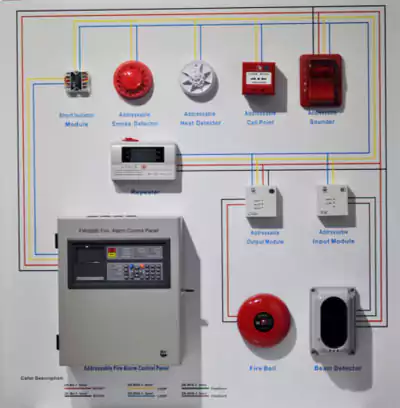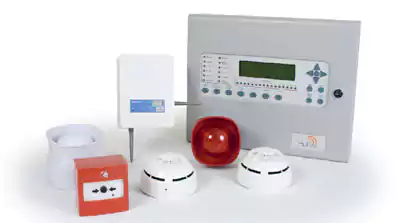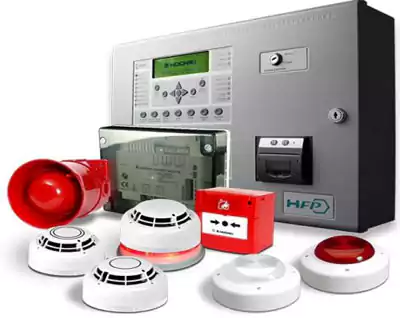Fire Alarm Systems / Fire Alarms / Fire Detection Systems
We are Manufacturer, Supplier, Exporter (and also Services Provider) of Fire Alarm Systems / Fire Alarms, Fire Alarm Sounders, Fire Detection systems, Conventional Fire Alarm Systems, Addressable Fire Alarm Systems and our setup is situated in Pune, Mumbai, Ahmednagar, Nagpur ( Maharashtra, India ).
A Fire Alarm Systems / Fire Alarms warns people when smoke, fire, carbon monoxide or other fire-related emergencies are detected. These alarms may be activated automatically from smoke detectors and heat detectors or may also be activated via manual Fire Alarms activation devices such as manual call points or pull stations.
Alarms can be either motorized bells or wall mountable sounders or horns. They can also be speaker strobes which sound an alarm, followed by a voice evacuation message which warns people inside the building not to use the elevators.
Fire Alarm Sounders can be set to certain frequencies and different tones including low, medium, and high, depending on the country and manufacturer of the device.
Conventional Fire Alarm Systems :
Conventional Fire Alarm Systems consist of manual call points, Fire Detection systems, sounders, beacons, and other devices grouped into zones. Each zone is a single wiring circuit which represents a building premises area within a building.
Communication between devices and the control panel typically has only three states: standby, fault, and fire. Conventional panels can only narrow down the location of a possible fire or fault as being somewhere within one or more zones.
This Fire Alarm Systems usually have very basic options for expansion, such as repeater panels which mimic the display and controls of the main panel and relay connections to link, for example, with security alarm systems. Being the oldest and simplest technology, it is certainly still reliable. Conventional Fire Alarm Systems are usually much cheaper than Addressable systems.
Addressable Fire Alarm Systems :
In an Addressable Fire Alarm Systems, all the devices such as detectors, call points and alarm bells are connected in a loop system to the Fire Addressable Control Panel and each device has an address (to tell about their location). This way, it is very easy to find the exact location of the device which has been triggered in the connected circuitry.
The basic idea behind the loop system is that in case of short circuit fault, only a small portion of the system is affected while the rest will work properly with the help of an isolation module connected in the loop. In a single loop, up to 99 devices may be connected and can be extended up to 3.3 km depending on the ability of the fire control panel system.
Protect What Matters Most with Our Fire Fighting Solutions.



